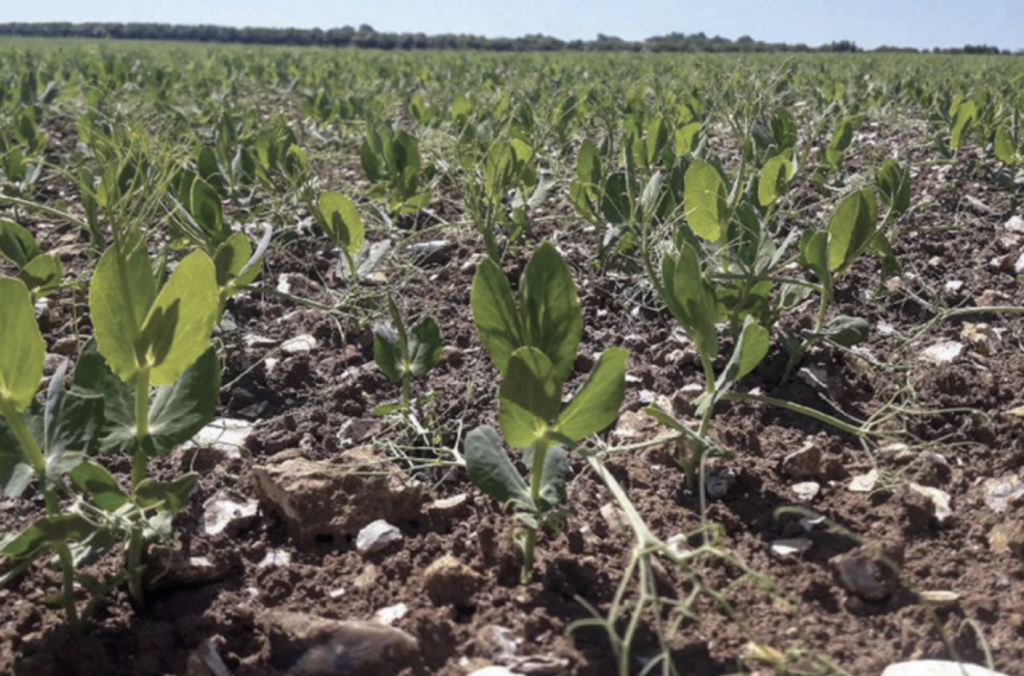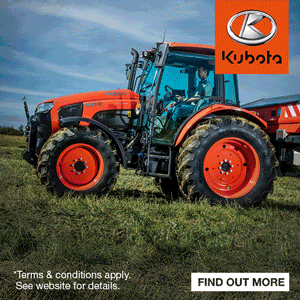How to grow a 5t/ha combinable pea crop
8th May 2020
Growing demand, exciting new uses and development of high consistency genetics, mean combinable peas have much to offer UK growers – but just how easy is it to include them

Growing demand, exciting new uses and development of high consistency genetics, mean combinable peas have much to offer UK growers – but just how easy is it to include them in arable rotations?
If you can make a reasonable fist of growing wheat, you should be able to produce a pro table crop of combinable peas, believes Oxfordshire grower David Passmore. With a yield of 5.3t/ha putting him in the top three producers in the ADAS Yield Enhancement Network (YEN) for peas in 2019, and a producer of some of the best pea seed in the business, he’s a man worth listening to.
“I would say anybody can grow the crop really, and a yield of 4.5t/ha is an achievable target for most growers. A lot of the management is simple – there are a lot less inputs to worry about compared to cereals, and you don’t need specialist kit,” David reckons.
“Do the job right and you’ll end up with good margins, soils left in really good condition and the added benefit of around 50kg N/ha as residual nitrogen for your next crop.” Attention to detail Growing around 20ha of peas as part of a 200ha arable rotation focused on professional seed production, attention to detail is what really makes David’s approach to pea production stand out.
Although peas are relatively easy to grow generally, there are some important times of the year when their management is pretty unforgiving with one such of these being drilling, he says.
“Wheat can be surprisingly tolerant regarding poorer seedbeds and drilling conditions, but that’s just not the case with peas. If you plant them at the wrong time or in poor conditions, you will be up against it for the rest of the year. Waiting for the right window for drilling is even more important with peas than with barley, I would say.”
Pea crops at Mays Farm, Ewelme, are usually grown after wheat. Land is ploughed, then left over the winter to weather.
“There’s an old saying that you should always plough for peas, but some of the top yielders in YEN recently have gone for deep cultivation instead,” says David.
“Whatever approach you use, the key is early cultivation – which cuts across the grain of what everyone is trying to do these days. Work the land early and dry, then leave it over the winter to get the frost and weather into it.
“That way you’ll have the least amount to do before planting the following spring.” Variety standing power According to James Maguire of KWS, for whom David has grown seed for approaching 20 years, variety is an important factor in the equation. “Whatever you’re doing, yield still pays, but a pea variety’s standing power is critical – plus you’ve got to choose one that’s suitable for your end market and highly regarded by buyers.
“Good colour is increasingly important and can be worth around 35-40 per cent of the price you will get, so it’s probably the single most important trait to look for in terms of maximising saleability.”
David’s YEN crop of 5.3t/ha was the large blue variety Mankato, which also took the top spot with a Norfolk-grown crop yielding 6.5t/ha in the YEN initiative, James points out.
“When you consider the average pea yield for the UK is still only about 3.0t/ha, you can start to see the difference that the right variety and management can make.
“Peas are often seen as a bit of a Cinderella crop – people jump in and out of them without really learning how to look after them – but when you get your management right, yields and margins can be really impressive. Mankato’s consistency makes it a good choice for growers new to peas, he says.
“It’s been a top 25 per cent performer in the PGRO Recommended List for the last four years. Much of this reliability is down to a near perfect combination of standing power and yield. Plus, Mankato is really marketable with a big seed that pea micronisers really like, as they can cut it in half – plus it has good colour which it holds well.”
Once drilled, few management interventions are needed in most years, David adds. “Nitrogen fertilisers are not allowed on peas – the crop fixes its own N – and our P and K levels tend to be generally good as a result of all the digestate and FYM we use.
“There is some trials evidence showing significant benefits of using sulphur in peas, so this year we’re going to put on polysulphate (sulphur potash) straight on after planting and see what that does. “YEN has also highlighted the importance of magnesium in high yielding pea crops so that is also something that we will be looking at in the future.”
Weed control-wise, a preemergence herbicide is essential as there are not really any other options, he points out. “Pea moths can also be a problem in some regions, so it’s often a good idea to put traps out to quantify this – but they’re not really an issue we have here.
“We will always use one fungicide but, in a high disease pressure year like last year, we would use another later on.”


